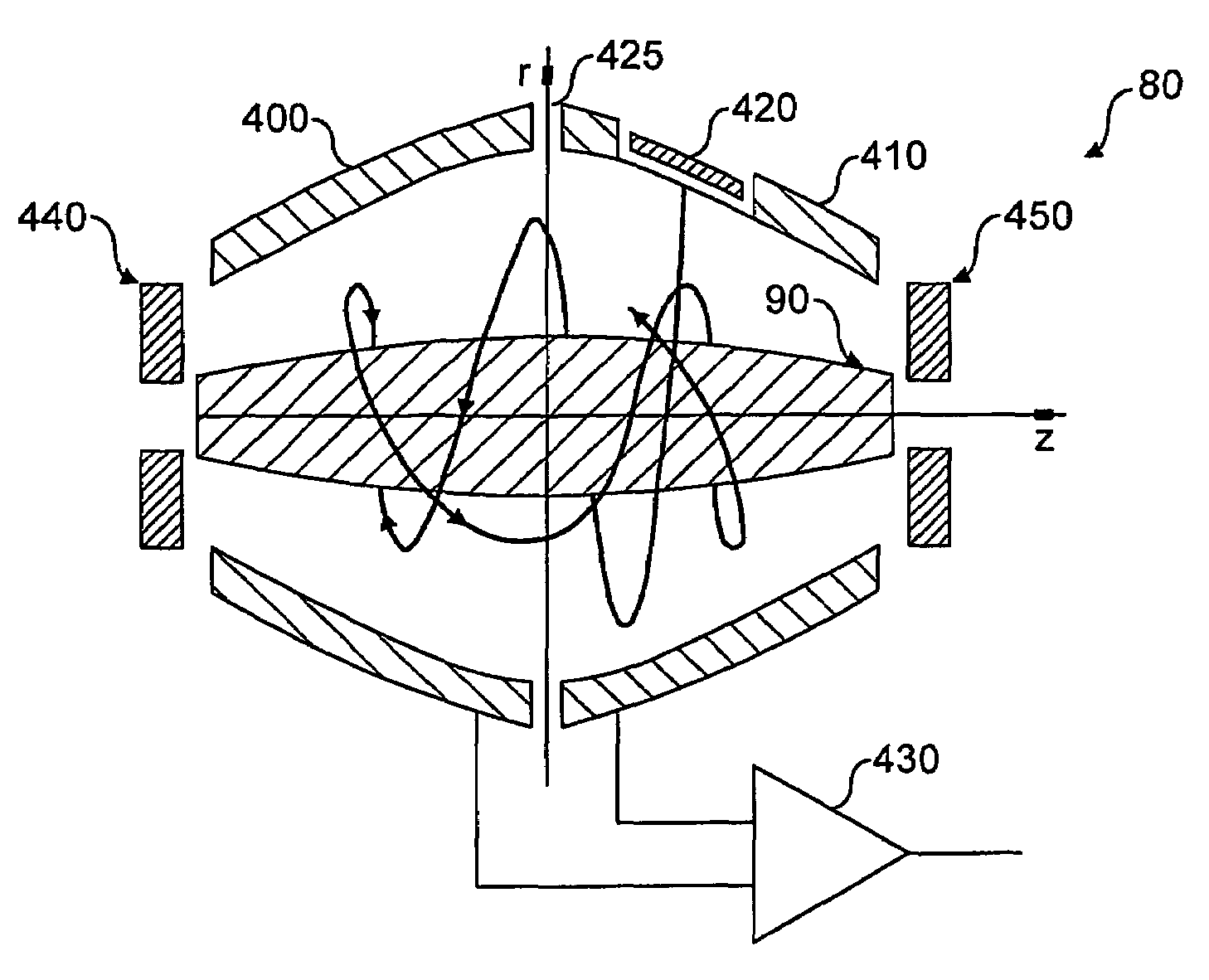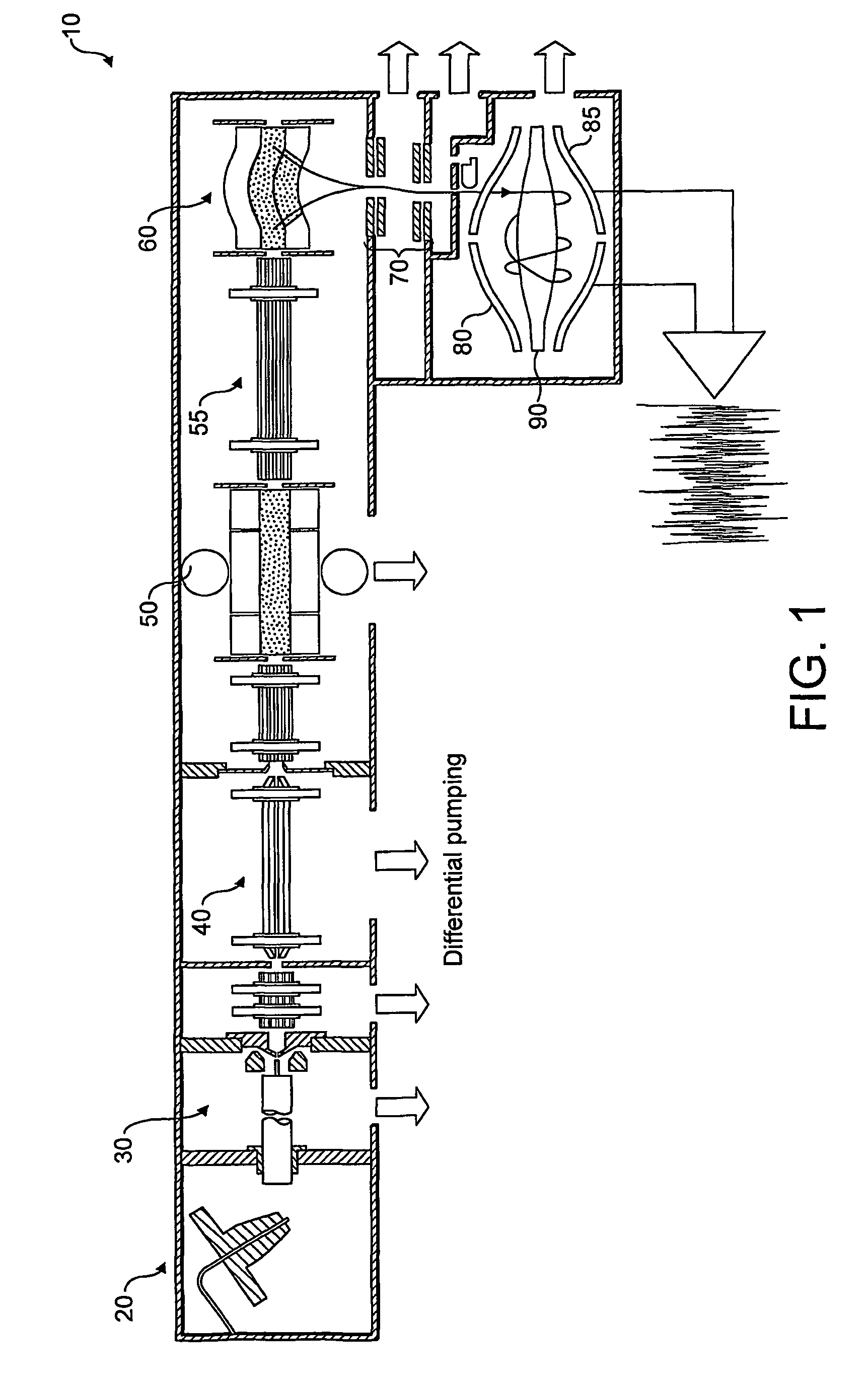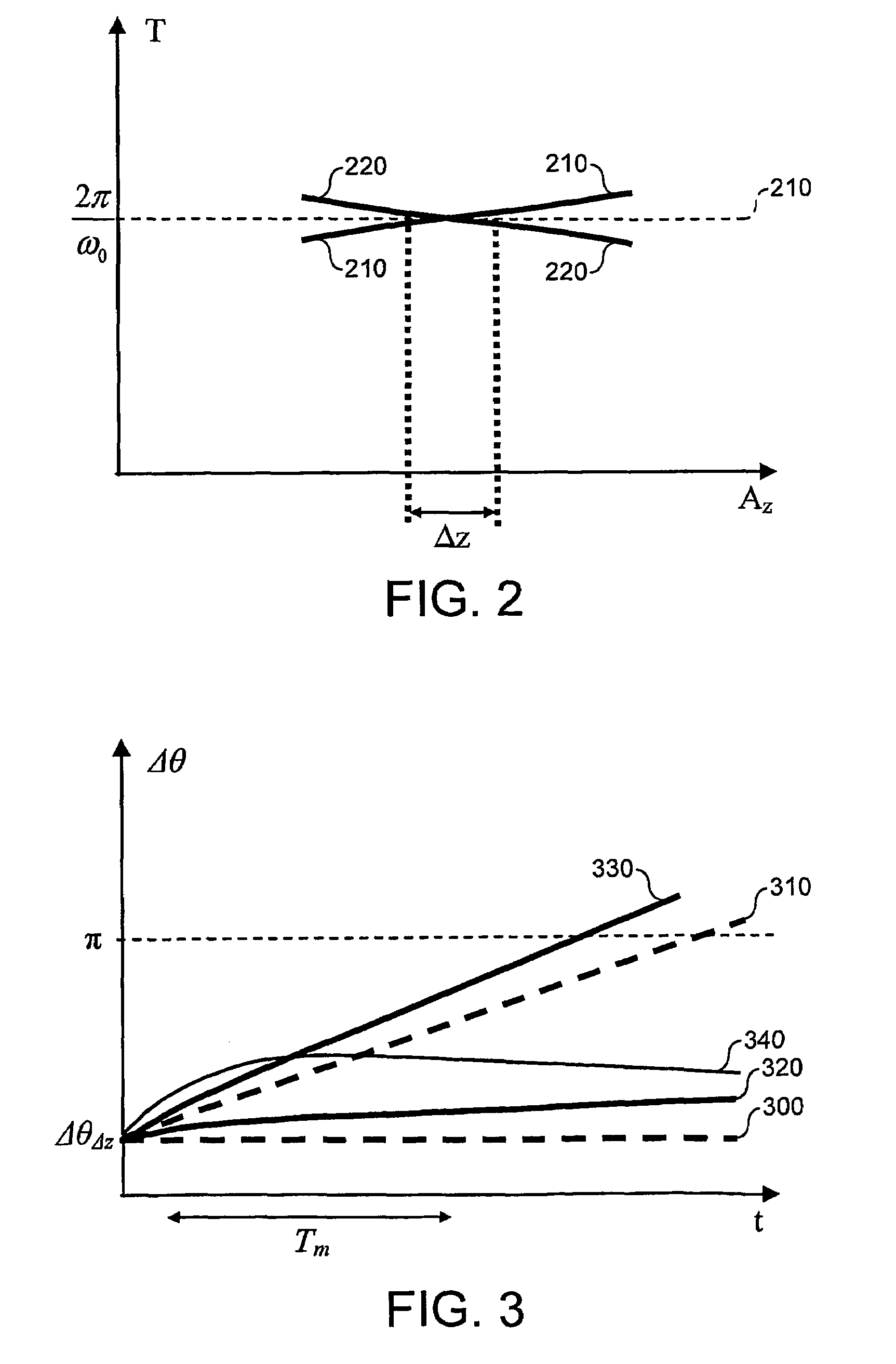Electrostatic trap
a technology of electrostatic traps and electrostatic peaks, which is applied in the direction of mass spectrometers, particle separator tube details, separation processes, etc., can solve the problems of split peak, poor mass accuracy, and poor quantitation
- Summary
- Abstract
- Description
- Claims
- Application Information
AI Technical Summary
Benefits of technology
Problems solved by technology
Method used
Image
Examples
Embodiment Construction
[0036]Referring first to FIG. 1, a schematic arrangement of a mass spectrometer including an electrostatic trap and an external storage device is shown. The arrangement of FIG. 1 is described in detail in commonly assigned WO-A-02 / 078046 and will not be described in detail here. A brief description of FIG. 1 is, however, included in order better to understand the use and purpose of the electrostatic trap to which the present invention relates.
[0037]As seen in FIG. 1, the mass spectrometer 10 includes a continuous or pulsed ion source 20 which generates gas-phase ions. These pass through an ion source block 30 into an RF transmission device 40 which cools ions. The cooled ions then enter a linear ion trap acting as a mass filter 50 which extracts only those ions within a window of mass charge ratios of interest. Ions within the mass range of interest then proceed via a transfer octapole device 55 into a curved trap 60 which stores ions in a trapping volume through application of an R...
PUM
 Login to View More
Login to View More Abstract
Description
Claims
Application Information
 Login to View More
Login to View More - R&D
- Intellectual Property
- Life Sciences
- Materials
- Tech Scout
- Unparalleled Data Quality
- Higher Quality Content
- 60% Fewer Hallucinations
Browse by: Latest US Patents, China's latest patents, Technical Efficacy Thesaurus, Application Domain, Technology Topic, Popular Technical Reports.
© 2025 PatSnap. All rights reserved.Legal|Privacy policy|Modern Slavery Act Transparency Statement|Sitemap|About US| Contact US: help@patsnap.com



